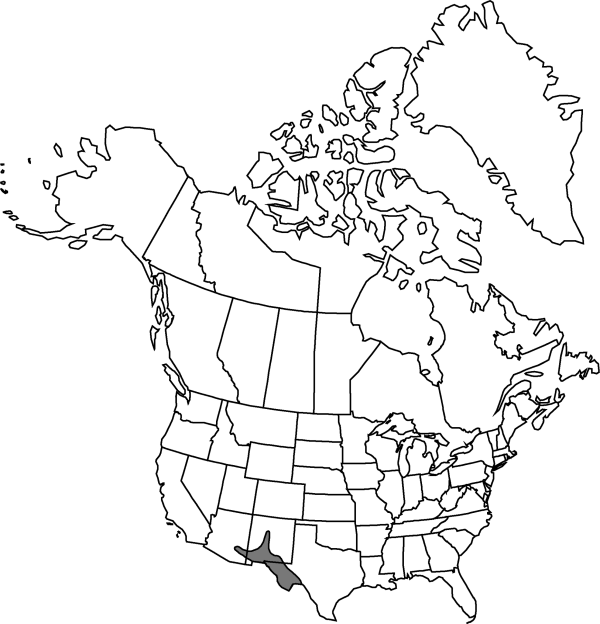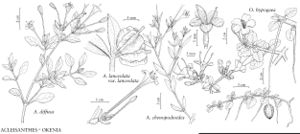Acleisanthes chenopodioides
Novon 12: 60. 2002.
Plants herbaceous, overall lightly pubescent with white, T-shaped minute hairs. Stems erect or ascending, sparsely to moderately leafy, 15–40 cm. Leaves dull green when fresh or dry, petiolate, those of a pair very unequal (the smaller often less than 1/2 the size of the larger), gradually reduced toward inflorescence, fleshy; petiole 5–45 mm; blade ovate to ovate-oblong or deltate, 15–50 × 6–40 mm, base rounded to subcordate, margins entire or undulate, apex acute, obtuse, or rounded. Flowers 3–25 in umbellate clusters, in forks of branches and distal axils, and terminal on branches; pedicel 1–4 mm; perianth 4–6 mm, tube greenish pink, limbs pink to lavender, 4–6 mm diam.; stamens 2(–3), widely spreading. Fruits 5 mm, puberulent with flattened, white hairs; wings 1.5–2 mm wide.
Phenology: Flowering late spring–early fall.
Habitat: Dry, sandy, and gravelly areas, rock, gypseous clay
Elevation: 700-1700 m
Distribution

Ariz., N.Mex., Tex., Mexico (Chihuahua).
Discussion
P. C. Standley (1916b) erected Ammocodon to accommodate this primarily morning-blooming species, based on its shorter perianth, fewer stamens, and umbellate inflorescences. B. A. Fowler and B. L. Turner (1977) maintained the genus separate from Selinocarpus. A. Heimerl (1934c) included the species in Selinocarpus, as did V. Bittrich and U. Kühn (1993). R. A. Levin (2000) presented evidence to support the inclusion of this species within a Selinocarpus clade within Acleisanthes, most closely allied to A. somalensis (Chiovenda) R. A. Levin.
Selected References
None.
